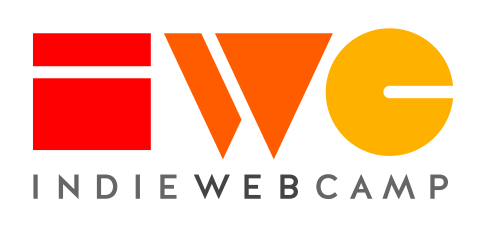2011/Demos
Demos
Shane presented NoMoreSharecropping.org, which was not built this weekend—it pre-existed.
However what Shane did add is git integration with a sufficient onboarding explanation/path for Jeremy Keith to follow.
Now there's a post that was posted there today from Jeremy (backdated to December of last year). Anyone can contribute. You do so by committing to the GitHub project: fork https://github.com/veganstraightedge/NoMoreSharecropping.org then write a post in Markdown and save it to the "_posts" folder. Commit the file and ask for a push request. That's it. So if you have anything to say on the subject of homesteading and sharecropping, why not add a post?
web intents format brainstorm and Firefox plugin
Glenn and Ben were working on web intents and how to register which intents your service supports. You can specify the details of the intent in the markup itself using data- attributes in the a element. Glenn worked on a Firefox plugin to harvest and register these intents.
Smallest Federated Wiki
Ed describes the brainstorming behind figuring out the Smallest Federated Wiki he worked with Ward Cunningham on. He's built an appliance on EC2 that will run the server. They started in Node but switched to Sinatra: it may not stay in Sinatra. They're going to run two read-only instances of the wiki and see if they can get them to federate with each other.
Calagator import improvements
Reid and Audrey were looking at improving how Calagator imports external events and venues. They added a bunch of things to pull in better data from Plancast and Meetup, as well as trying to avoid the creation of duplicate venues. Those are in addition to the hCalendar parser. They want to wrap all of this up and release it for other people to build services on.
one-click indieweb setup
Mark from Plancast set out to create a web service for regular people to get up and running with an indie web site without having to deal with code, domain registrars and other hurdles.
He has created mockups of the process. You choose a domain name and then choose what services you want to run there. That's the entry point for starting out with an indie web presence. The tagline is "Claim your online identity." You are asked for 1) the desired URL, 2) an email address, 3) a password.
The mockups can be found at the following address: Homesteading on the Indie Web
The next step involves sucking in data from existing profiles such as Facebook, Twitter, LinkedIn, MySpace and blogging platforms. There needs to be a step for payment (for domain registration) next. Then the result is a profile page with your picture, your bio, your links elsewhere and a feed of activity. That's the initial experience and the idea is that people can then build on that.
The code for this can be found at [homestead]
Falcon functionality in Wordpress plugin
Will was working on a Wordpress plug-in to do what Falcon does: publish status updates on your own site and push out to Twitter (rather than pulling in updates from Twitter). He's building on WPtoTwitter with some Cassis code. It maintains the ID of the statusupdate from Wordpress and adds it to the update on Twitter—it's not yet hyperlinked up.
Will's updated plugin uses CASSIS's ellipsize function, and he wrote some logic to produce an unlinked perma-citation with parentheses for when the complete statusupdate gets posted on Twitter, and to provide links for when the status updates are longer.
Flickr backups
Aaron and Brennan were working on keeping backups of your photos on Flickr. There are two different approaches: 1) backing up what's already on Flickr and 2) posting to Flickr from your own site. The first step is authentication: Flickr have just officially switched over to OAuth for this. The old authentication still works for now but it will be deprecated. Aaron got the authentication working for Social Igniter. With that in place, it can then call out to Flickr, grab your pictures and archive them locally. The next step is getting them onto a Wordpress blog. Amber and Petra worked on adapting the markup from Ffffound and customising it to act as a Wordpress theme. The metadata from Flickr maps to metadata for the Wordpress posts: title, description, tags, etc. With that metadata in place, it's now possible to show related images in a post (much like Ffffound).
Source code now available: https://github.com/aaronpk/Flickr-Archiver
web intents user experience
Tantek wanted to add web intents to his own site but got sidetracked by UI issues. Where should the annotations appear? Should they be on the side, together with the previous/next buttons or should they be above or below the post? Putting the options to the side seems like a bad idea because people tend to associate that content with the whole site rather than the specific post. A better option is to mimic Twitter and put the options right below the post (together with the other metadata like the data). A third option is to display options on top, like Flickr does. But that really only works with a singular piece of content like a photo ...and actually it doesn't necessarily work all that well on Flickr. Then a discussion started about Readability/Instapaper actions like "read later"—it would be nice to add an equivalent "I've read this" checkbox (and maybe that could it add it to your collection of things you've read). Ben pointed out that it makes sense to put "read later" at the top or maybe the side, but put "I've read this" at the bottom. Having a record of things you've read would it make it possible to have a searchable record (for things you haven't necessarily bookmarked).
